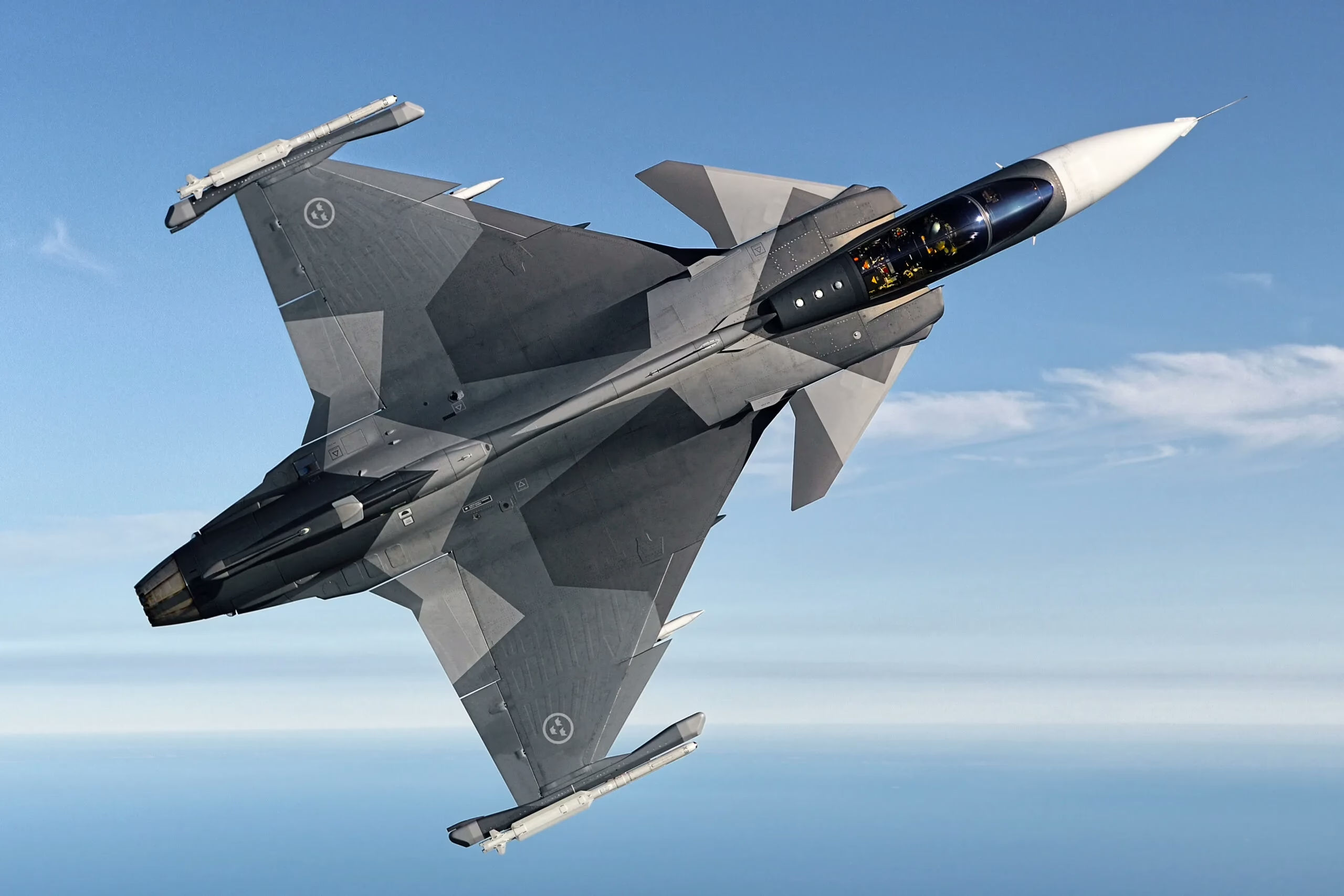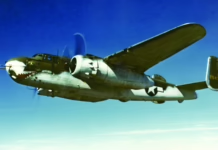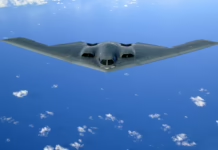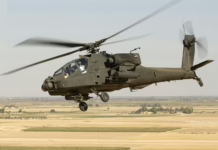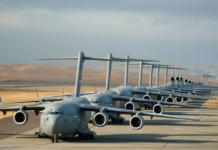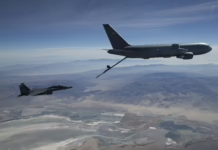Twelve retired senior officers challenge Ottawa’s F-35 review, exposing deep rifts between military operational needs and political imperatives.
A dozen retired Royal Canadian Air Force senior officers have taken the extraordinary step of directly lobbying Prime Minister Mark Carney against reducing Canada’s planned acquisition of Lockheed Martin F-35A stealth fighters, according to Canadian broadcaster Radio-Canada.
The Nov. 17 letter to key decision makers in Ottawa, including Carney, cautions against truncating the country’s future F-35A fleet in favor of purchasing Gripen E/F fighters from Swedish manufacturer Saab. The move represents an unprecedented public intervention by former military leadership into civilian defense policy deliberations.
Former chief of staff of the Canadian armed forces, Tom Lawson, was reportedly among the signatories, though he declined to confirm this to Radio-Canada. The letter itself has not been made public, and neither its full contents nor the complete list of signatories were independently verified by FlightGlobal.
Military Doctrine Meets Political Reality
The retired officers’ lobbying effort comes during a formal state visit to Canada by top Stockholm officials, including Defense Minister Pal Jonson, Deputy Prime Minister Ebba Busch, and Swedish monarch King Carl XVI Gustaf. Canadian Defense Minister David McGuinty met with Jonson on Nov. 19, one day after McGuinty hosted an industry roundtable with venture capital financiers about advancing Canada’s domestic defense capabilities.
In an interview with Radio-Canada, Lawson—who also served as commander of the RCAF and deputy commander of the North American Aerospace Defense Command (NORAD)—argued there is “nothing available in the free world that comes close to the quality of the F-35” among fighter aircraft.
“The F-35 is so far beyond anything that the Gripen can provide that anything you’d be saving in terms of money by going to a second fleet would be lost, because that fleet would be close to useless in a wartime situation,” Lawson said.
Lawson previously worked as a part-time consultant for Lockheed Martin but no longer holds a position with the company, raising questions about the independence of military advice when former officers maintain industry ties.
Aggressive Swedish Courtship
Saab is engaged in an aggressive, though publicly subdued, effort to win over Canadian decision makers. Chief Executive Micael Johansson traveled to Canada in late October to meet with senior officials in Ottawa.
Following a declaration from the Ukrainian government expressing interest in acquiring up to 150 Gripen fighters, Saab floated the possibility of building a new assembly line in Canada to support additional production. The company has also offered to locate assembly of its GlobalEye airborne early warning and control aircraft in Canada, should Ottawa commit to a purchase. The GlobalEye platform is based on the Global 6000 business jet manufactured in Ontario by Canadian airframer Bombardier.
The Carney Bind
Canada has existing commitments to buy 88 conventional takeoff and landing F-35As from Lockheed to replace the RCAF’s aged and obsolete fleet of Boeing F/A-18 Hornet fighters. Ottawa has already obligated funds for 16 F-35s, with assembly work on those aircraft underway in Fort Worth, Texas. The government confirmed in October that it will proceed with the acquisition of that initial tranche.
However, the remainder of the planned 88-aircraft fleet appears negotiable—driven by a historic deterioration of U.S.-Canadian relations under the administration of President Donald Trump. Those tensions have pushed Ottawa to reconsider its F-35 purchase, driven by a desire to diversify defense procurement away from the U.S.
Carney was catapulted into office from relative political obscurity by running a campaign centered on reducing Canada’s economic and military reliance on its southern neighbor. Shortly after taking office earlier this year, Carney ordered a review of the F-35 program, originally promised by the end of the North American summer.
With temperatures now regularly hovering around freezing in Ottawa, that report has still not been released—an indicator of the bind in which the Carney government finds itself.
Active-Duty Officers Tread Carefully
Several currently serving senior Canadian defense officials have expressed strong support for fighter modernization, though they have stopped short of explicitly endorsing the F-35.
In a July interview with FlightGlobal shortly after assuming her post, current RCAF chief Lt. Gen. Jamie Speiser-Blanchet affirmed her commitment to “building a very modern fifth-generation air force.”
In an October parliamentary hearing, Speiser-Blanchet told lawmakers she is focused on providing Carney—the ultimate decision maker—with “all the information he needs to make a reasoned judgement.”
However, she also noted that Russia and China are rapidly fielding fifth-generation technologies. “Our adversaries are advancing in their technologies at a very rapid pace, and at the moment, both China and Russia have fifth-generation fighter aircraft and fifth-generation missiles that are able to go at much greater speed and with much more lethality, that are holding Western allies at risk,” Speiser-Blanchet said.
In 2024, U.S. and Canadian fighters intercepted a flight of Russian and Chinese bombers operating off the coast of Alaska—the first documented interdiction involving a joint sortie of military aircraft from the two authoritarian countries.
Deadline Pressures Mount
During the same October hearing, Deputy Defense Minister Stefanie Beck said Ottawa must move swiftly to fully replace the obsolete Hornet fleet by 2032.
“Through this project, we’re making sure that the RCAF has the capacity they need to carry out the mandate that’s been given to them by the government of Canada,” Beck said of the F-35 fielding.
She also noted that the Department of National Defence is moving “full steam ahead” with previous acquisition plans until directed otherwise by political leaders.
Canada is expected to bring home its first F-35A in 2028.
Mixed-Fleet Concerns
Separately from the recent letter to the prime minister, Lawson and other retired RCAF officers have cautioned against the service fielding a mixed fleet of fighters, which could include a fourth-generation type like the Saab Gripen E/F or Dassault Rafale alongside a reduced contingent of F-35As.
With the F-35 being the Western world’s only fifth-generation stealth fighter in active production, the Carney government appears left with two undesirable options—the politically unpopular choice of buying a marquee American defense product that will serve for decades, or opting for a less-capable alternative.
Industrial Base Implications
The impact of rolling back the F-35 purchase will likely extend beyond military capability. At least 30 Canadian companies work as suppliers to the worldwide F-35 program, according to CBC, employing approximately 2,000 workers domestically.
One potential face-saving option for Carney could be to push for assembly and delivery of Canada’s F-35s outside the U.S. Belgium successfully employed this tactic earlier in the year, floating a plus-up to the country’s existing F-35A order if those additional jets could be produced at Lockheed’s final assembly and checkout facility in Cameri, Italy.
That site is managed by Italian airframer Leonardo in partnership with Lockheed. A third F-35 assembly plant is operated by Mitsubishi Heavy Industries in Nagoya, Japan.

Key Takeaways
- Twelve retired senior RCAF officers, including former defense chief Tom Lawson, sent an unprecedented letter to Prime Minister Mark Carney urging against reducing Canada’s F-35 purchase in favor of Swedish Gripens.
- The intervention reveals tensions between military operational requirements and political imperatives, as Carney seeks to diversify defense procurement away from the U.S. amid deteriorating bilateral relations.
- Active-duty RCAF leadership has emphasized the need for fifth-generation capabilities to counter rapidly advancing Russian and Chinese technologies, while carefully avoiding explicit endorsement of the F-35.
- Canada faces a 2032 deadline to replace its obsolete CF-18 fleet, with 16 F-35s already funded and under construction, but the remaining 72 aircraft remain subject to ongoing policy review.
- Any reduction in F-35 purchases would affect 30 Canadian suppliers and approximately 2,000 domestic aerospace workers, though alternative assembly options in Italy could provide political cover.


